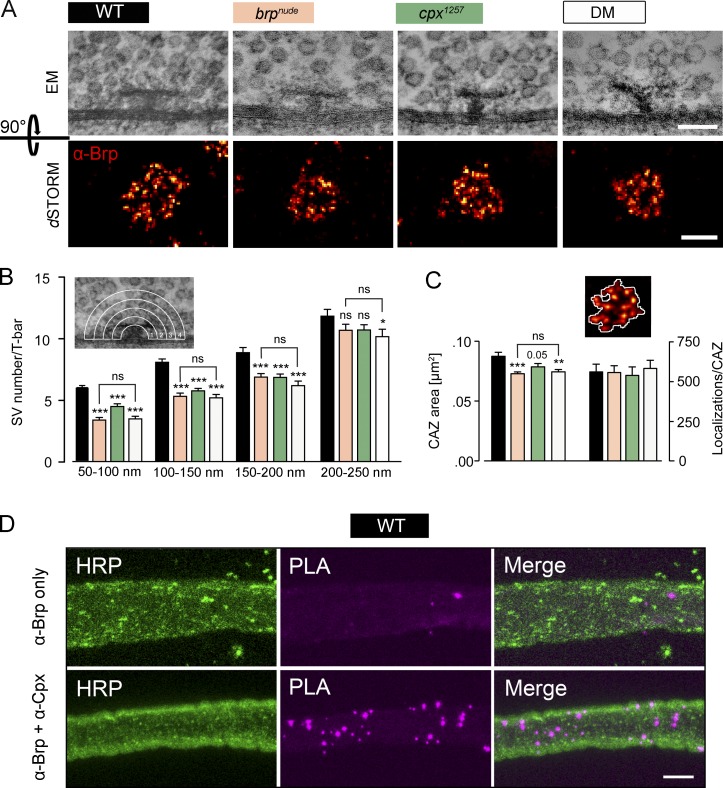Figure 4.
Cpx supports SV tethering to the Drosophila CAZ. (A) Top: T-bars (viewed from the side) with associated SVs demark the CAZ in electron micrographs of larval motoneurons. Bottom: dSTORM images of antibody stainings against Brp (mAb nc82, NMJ 6/7) show the CAZ viewed en face. (B) Quantification of SVs surrounding the T-bar in four concentric shells, each 50 nm wide. Compared with the WT (black), fewer SVs are found near the T-bar in brpnude (beige) and cpx1257 (green) single mutants. A comparable, nonadditive effect is seen in the DM (white; n ≥ 38, rank sum test; Table S5). (C) The count of fluorophore localization events in dSTORM images is proportional to the number of Brp protein copies (Ehmann et al., 2014). In all three mutant genotypes, the same number of Brp proteins occupies a smaller area (n ≥ 18, t test; Table S6). This is in line with CAZ filaments spreading out upon SV tethering. (D) Maximal projections of confocal images showing that Brp and Cpx are located no further apart than ∼40 nm within WT larval axons using a PLA. The PLA was performed using primary antibodies against Brp and Cpx (lower row; PLA product, magenta) and its specificity was assessed by incubation with the Brp antibody only (upper row). Neuronal membranes were visualized with an antibody against HRP (green). Data are presented as mean ± SEM. *, P ≤ 0.05; **, P ≤ 0.01; ***, P ≤ 0.001 (versus WT). Scale bars: (A) upper panel 100 nm, lower panel 200 nm; and (D) 5 µm. ns, not significant.

